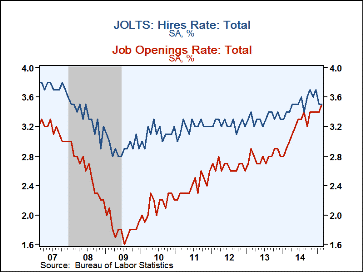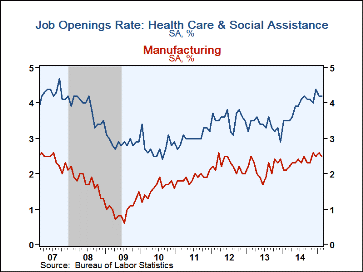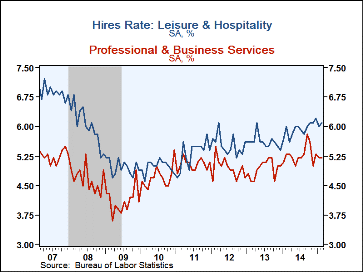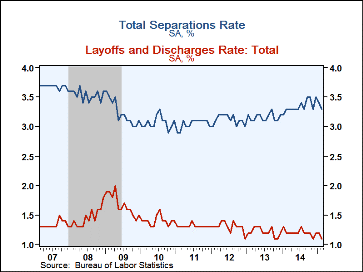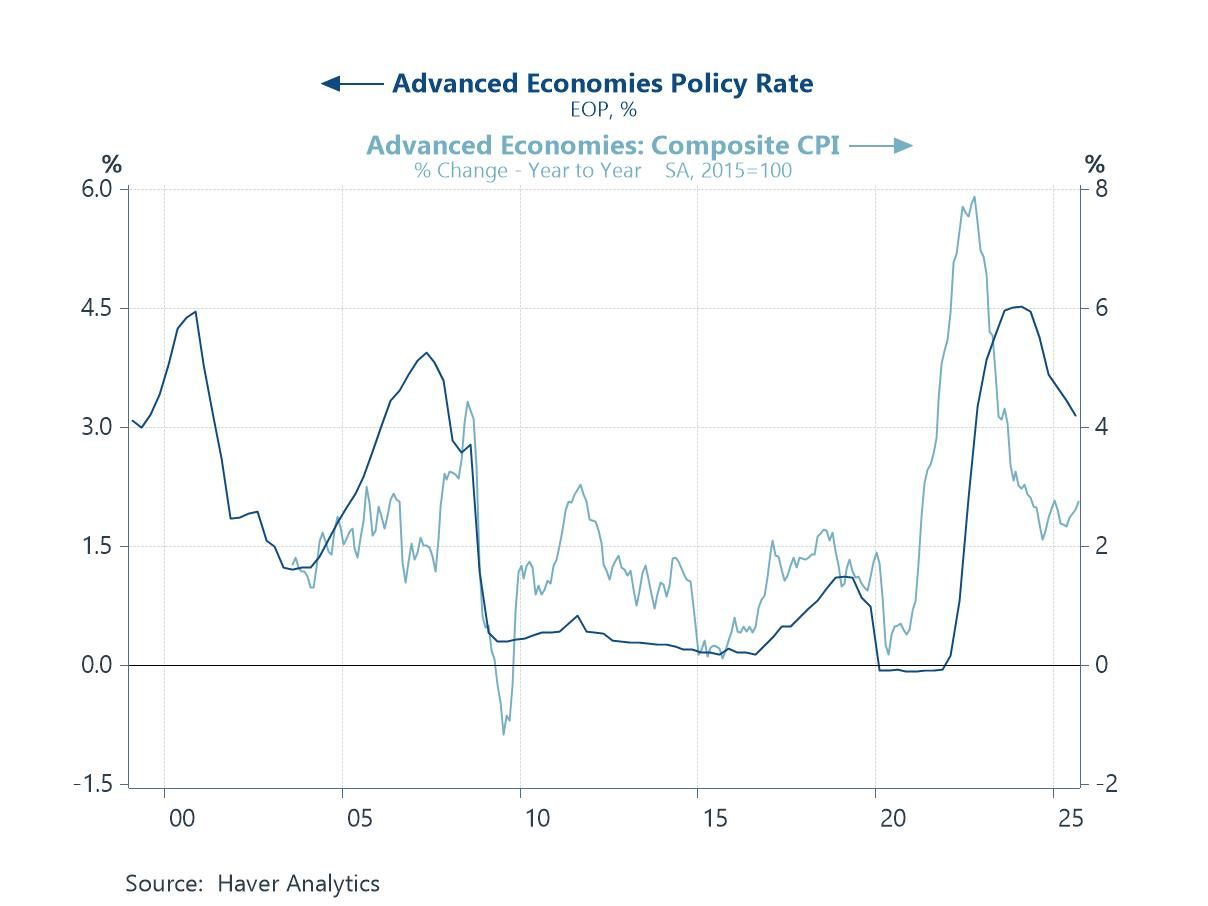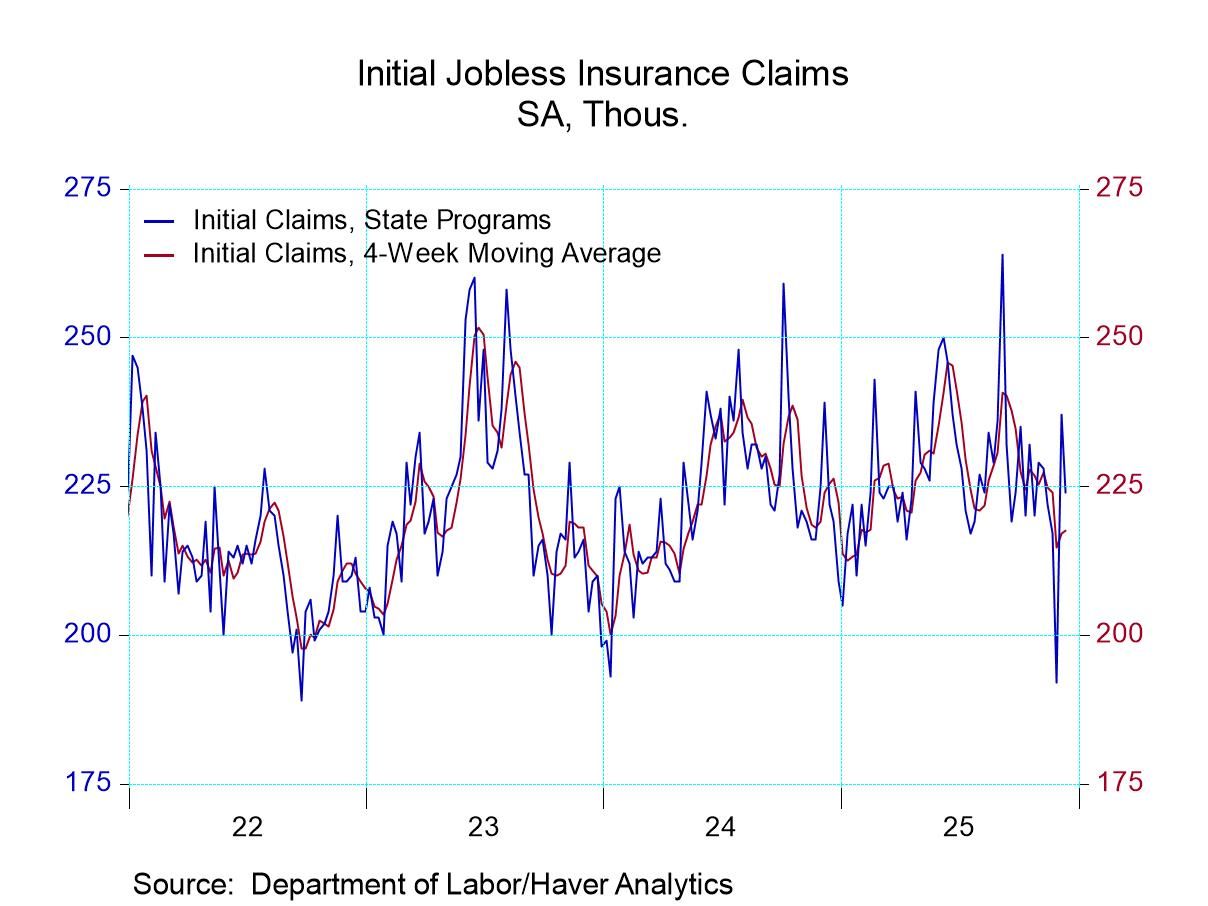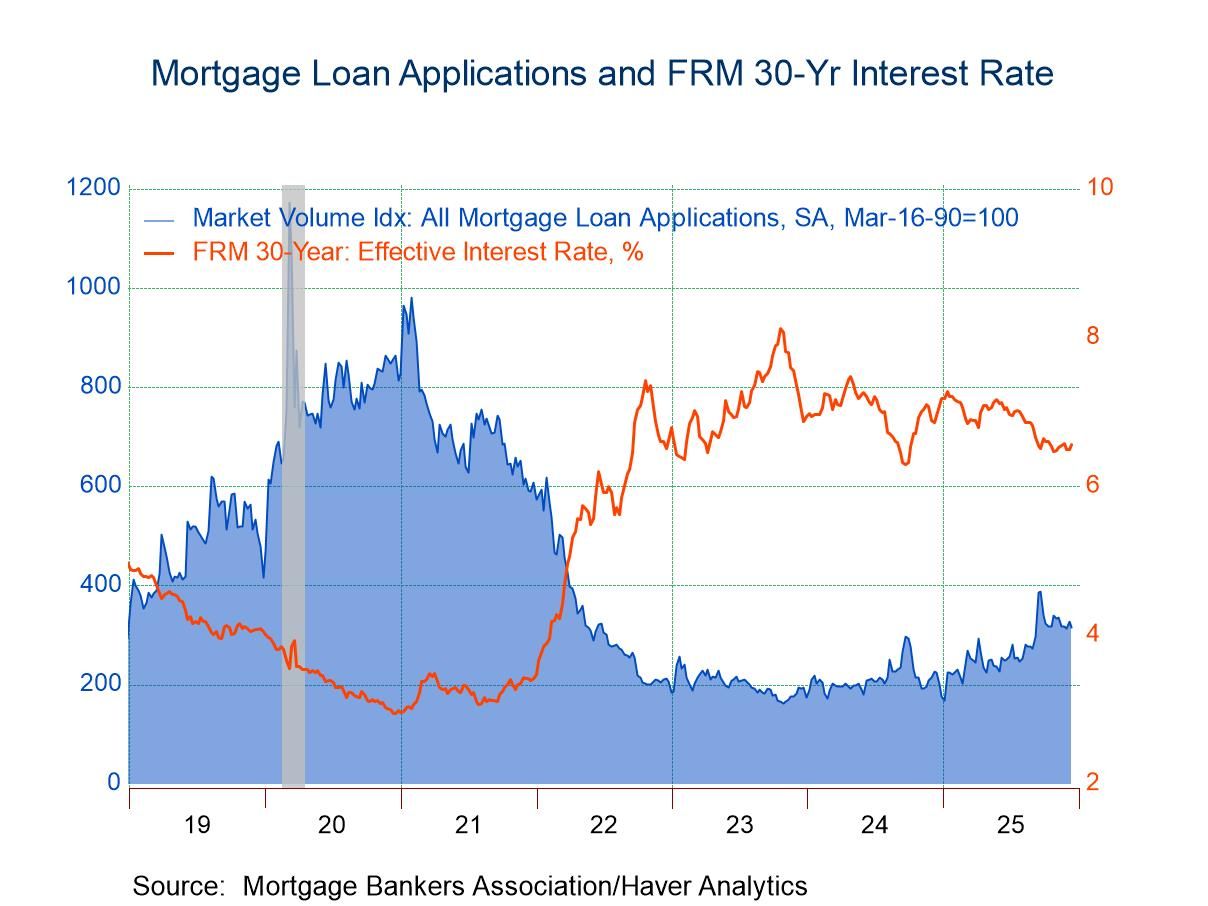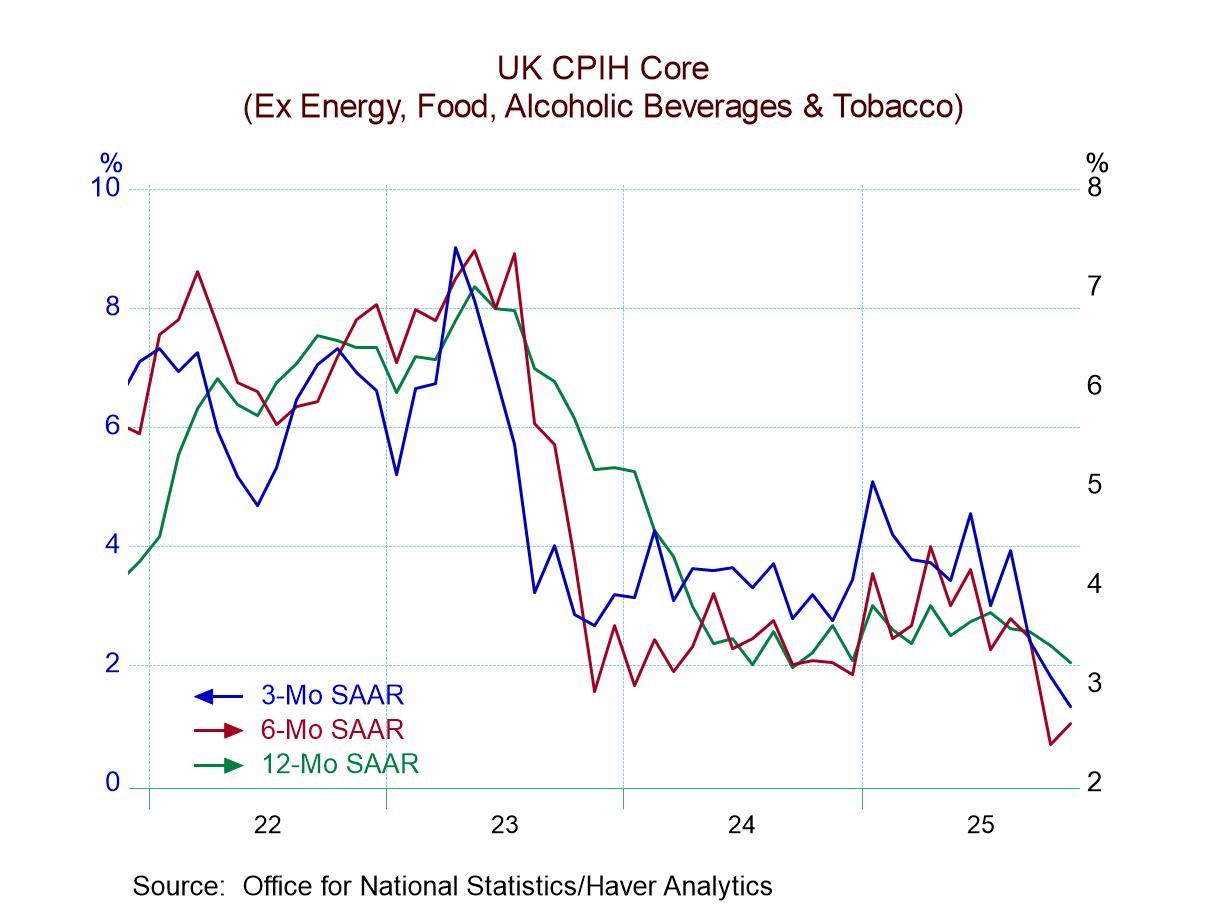 Global| Apr 07 2015
Global| Apr 07 2015U.S. JOLTS: Job Openings Rate Nudges Closer to 2001 Peak
by:Tom Moeller
|in:Economy in Brief
Summary
The job openings rate during February improved to 3.5%, leaving it closer to the series high of 3.8% and up from the recession low of 1.6%. The job openings rate is the number of job openings on the last business day of the month as a [...]
The job openings rate during February improved to 3.5%, leaving it closer to the series high of 3.8% and up from the recession low of 1.6%. The job openings rate is the number of job openings on the last business day of the month as a percent of total employment plus job openings. The actual number of job openings surged 23.4% y/y to 5.133 million from 4.965 million in January, revised from 4.998 million. The Bureau of Labor Statistics reports these figures in its Job Openings & Labor Turnover Survey (JOLTS).
The private-sector job openings rate rose to 3.8%, its highest level since January 2001 and up from the recession low of 1.7%. The rate in leisure & hospitality improved to 4.8%, nearly the cycle high, but the rate in professional & business services held at 4.6%. In health care & social services, it also held m/m at 4.2% while in trade, transportation & utilities it improved to 3.2%, up from the recession low of 1.2%. The rate in the factory sector slipped to 2.5%. The construction rate gained to an eight-year high of 2.5%. The job openings rate in the government sector edged down to 2.2% but was up from the 2009 low of 1.1%.
The hires rate held at 3.5%, the lowest level since August. The hires rate is the number of hires during the month divided by employment. The private sector hires rate remained at 3.9%, the lowest level in six months. Amongst leisure & hospitality firms, the rate improved to 6.1%. The rate in professional & business services held at 5.2%. In the construction sector, the rate backpedaled to 4.7%, its lowest since September. The hiring rate in education & health services ticked up to 2.7% and in the factory sector it held at 2.1%. In the government sector, the hiring rate remained at 1.4%.
The number of hires declined 1.6% m/m (+4.6% y/y), the third decline in four months. Private sector hires fell 1.6% (+4.7% y/y), off 6.4% versus the expansion high reached in December. Health care & social services employment advanced 10.6% y/y and factory sector jobs increased 7.6% y/y. Leisure hospitality hiring increased 5.3% y/y while construction sector jobs rose 3.5% y/y. Professional & business services employment improved 1.5% y/y. Government hiring rose 3.7% y/y.
The job separations rate returned to its recent low of 3.3% but the actual number of separations increased 3.7% y/y. Separations include quits, layoffs, discharges, and other separations as well as retirements. The private sector separations rate edged down to 3.6% while the government sector's rate held at the five year high of 1.5%. The layoff & discharge rate returned to the record low of 1.1%. The private sector layoff rate slipped to the record low of 1.2% but the government's rate held at 0.5% for the fourth consecutive month.
The JOLTS survey dates to December 2000 and the figures are available in Haver's USECON database.
The National and Regional Economy is the title of yesterday's speech by N.Y. Fed President & CEO William C. Dudley and it can be found here.
| JOLTS (Job Openings & Labor Turnover Survey, SA) | Feb | Jan | Dec | Feb '14 | 2014 | 2013 | 2012 |
|---|---|---|---|---|---|---|---|
| Job Openings, Total | |||||||
| Rate (%) | 3.5 | 3.4 | 3.4 | 2.9 | 3.4 | 2.8 | 2.6 |
| Total (000s) | 5,133 | 4,965 | 4,877 | 23.4% | 22.6% | 9.3% | 3.2% |
| Hires, Total | |||||||
| Rate (%) | 3.5 | 3.5 | 3.7 | 3.4 | 42.2 | 39.8 | 38.8 |
| Total (000s) | 4,916 | 4,994 | 5,239 | 4.6% | 8.4% | 3.4% | 4.2% |
| Layoffs & Discharges, Total | |||||||
| Rate (%) | 1.1 | 1.2 | 1.2 | 1.2 | 14.5 | 14.6 | 15.5 |
| Total (000s) | 1,591 | 1,722 | 1,725 | -4.8% | 2.4% | -4.9% | 1.1% |
Tom Moeller
AuthorMore in Author Profile »Prior to joining Haver Analytics in 2000, Mr. Moeller worked as the Economist at Chancellor Capital Management from 1985 to 1999. There, he developed comprehensive economic forecasts and interpreted economic data for equity and fixed income portfolio managers. Also at Chancellor, Mr. Moeller worked as an equity analyst and was responsible for researching and rating companies in the economically sensitive automobile and housing industries for investment in Chancellor’s equity portfolio. Prior to joining Chancellor, Mr. Moeller was an Economist at Citibank from 1979 to 1984. He also analyzed pricing behavior in the metals industry for the Council on Wage and Price Stability in Washington, D.C. In 1999, Mr. Moeller received the award for most accurate forecast from the Forecasters' Club of New York. From 1990 to 1992 he was President of the New York Association for Business Economists. Mr. Moeller earned an M.B.A. in Finance from Fordham University, where he graduated in 1987. He holds a Bachelor of Arts in Economics from George Washington University.


